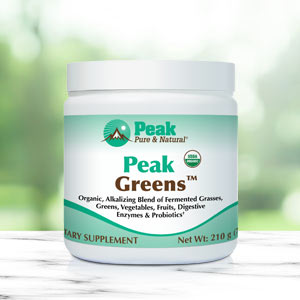Get Easy Health Digest™ in your inbox and don’t miss a thing when you subscribe today. Plus, get the free bonus report, Mother Nature’s Tips, Tricks and Remedies for Cholesterol, Blood Pressure & Blood Sugar as my way of saying welcome to the community!
Experts blame 3 heavy metals for increasing heart disease risk

We’re all quite familiar with the more commonly cited risk factors for cardiovascular disease. Eating a poor diet and skimping on exercise are just a couple that lead to high blood pressure or cholesterol and get the journey to heart disease started.
However, one lesser-known risk factor that has come to light in recent years is environmental exposure to heart-hurting toxins.
For instance, research has found a link between air pollution and cardiovascular disease. In fact, four leading cardiovascular organizations — the World Heart Federation (WHF), the American College of Cardiology (ACC), the American Heart Association (AHA), and the European Society of Cardiology (ESC) — have called for the medical community and health authorities to speak up and act to mitigate the health impacts of air pollution.
Now, the AHA is going one step further, calling out three specific metal contaminants doing the most damage to heart health in the form of ischemic heart disease, stroke and peripheral artery disease.
The triple threat to heart health
Regardless of where you live in the world, it’s almost impossible to escape exposure to contaminants in the air, water or soil. While most of them are only present in low levels, researchers are finding chronic low or moderate level exposure to three, in particular, are contributing to cardiovascular disease on a significant scale…
According to the AHA, “contaminant metals interfere with critical intracellular reactions and functions leading to oxidative stress and chronic inflammation that result in endothelial dysfunction, hypertension, epigenetic dysregulation, dyslipidemia, and changes in myocardial excitation and contractile function.”
In other words, they promote plaque formation through oxidative stress, raise blood pressure, cholesterol and inflammation, narrow the heart’s blood vessels and interfere with the heart’s rhythm.
In particular, they call out lead, cadmium and arsenic…
- One of the worst, lead, can be found in a variety of items. While lead paint was banned in the U.S. in 1978, it can still be found in old homes. Lead can also be found in groundwater and old water pipes. Spices, cosmetics, electronics, industrial emissions and tobacco products (and the resulting secondhand smoke) can all contain lead. And food can be contaminated with lead from water, as well as some pottery, ceramics, and kitchenware.
- Cadmium is present in nickel-cadmium batteries, plastic, ceramics and glassware, pigments and construction products. Worse, because industrially produced fertilizers use phosphate rock naturally rich in cadmium, the heavy metal can contaminate root vegetables and leafy green plants (including tobacco).
- Then there is arsenic, which is primarily present in groundwater. From there, arsenic is passed on to drinking water, soil and food grown in that contaminated soil. Arsenic tends to build up in rice (even instant rice) more than other food crops.
Heart conditions and premature death from heavy metals
“These metals interfere with essential biological functions and affect most populations on a global scale,” says vice chair of the AHA statement writing group Dr. Ana Navas-Acien, a professor at Columbia University’s Mailman School of Public Health.
“After exposure, lead and cadmium accumulate in the body and remain in bones and organs for decades,” Navas-Acien adds. “In the U.S. alone, one large study suggested that more than 450,000 deaths annually could be attributed to lead exposure.”
According to the AHA’s scientific statement, global epidemiologic research confirms that lead, cadmium and arsenic are associated with premature death, due in large part to increased cardiovascular disease risk. Some of the reports cited include:
- A 2021 American Heart Association scientific statement recognizing exposure to toxic metals as a non-conventional risk factor for peripheral artery disease.
- A 2018 review published in the British Medical Journal that reported higher urine levels of arsenic and blood levels of lead and cadmium were associated with a 15 to 85 percent increase in stroke and heart disease risk.
- One study in China found higher levels of lead in the blood were linked with carotid plaque in people with type 2 diabetes and another found a connection between cadmium and arsenic exposure and a higher rate of heart disease and ischemic stroke.
- In Spain, a general population study found an association between cadmium in urine and increased rates of newly diagnosed cardiovascular disease.
An eye on chelation therapy
Given this mounting evidence that chronic exposure to low levels of lead, cadmium and arsenic through commonly used household items, air, water, soil and food can increase risk of cardiovascular disease, the AHA is recommending a multi-faceted approach to reducing these risks.
This could include potential public health measures such as environmental monitoring and abatement, individual testing, further evaluation of the consequences of metal exposure and treatment development.
There is currently no standard medical therapy to counteract the vascular impact of these toxic metals. But researchers are exploring the effect of chelating agents in removing contaminant metals, especially lead and cadmium, from the body. The chelating agent binds to the metals so they can be excreted from the body.
The statement also suggests research is needed to investigate supplements that may reduce the effects of these metals and speed up excretion. Two that have shown potential based on small trials include folate and N-acetyl cysteine.
In addition, try to cut down on sources you’re likely exposed to on a daily basis — including the food we eat and the beverages we drink.
Editor’s note: Have you heard of EDTA chelation therapy? It was developed originally to remove lead and other contaminants, including heavy metals, from the body. Its uses now run the gamut from varicose veins to circulation. Click here to discover Chelation: Natural Miracle for Protecting Your Heart and Enhancing Your Health!
Sources:
Chronic exposure to lead, cadmium and arsenic increases risk of cardiovascular disease — American Heart Association
Contaminant Metals as Cardiovascular Risk Factors: A Scientific Statement From the American Heart Association — Journal of the American Heart Association
Understand Your Risk for Heart Disease — National Heart, Lung, and Blood Institute














